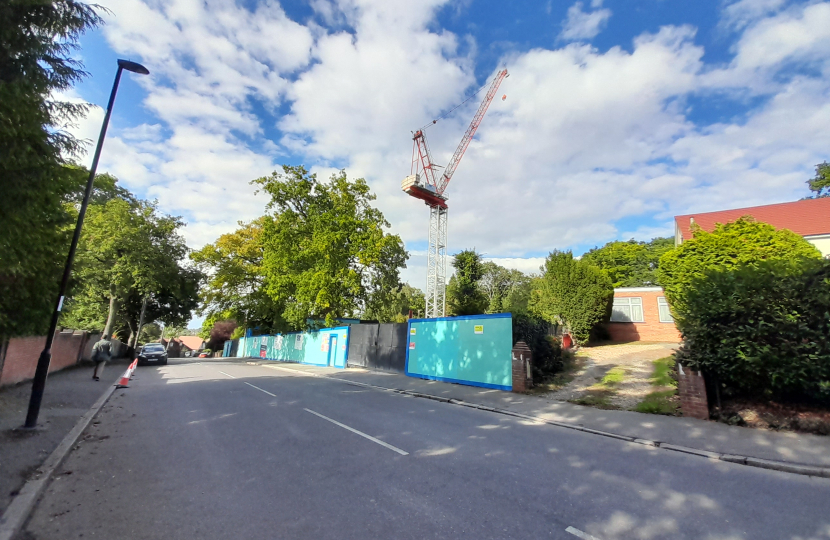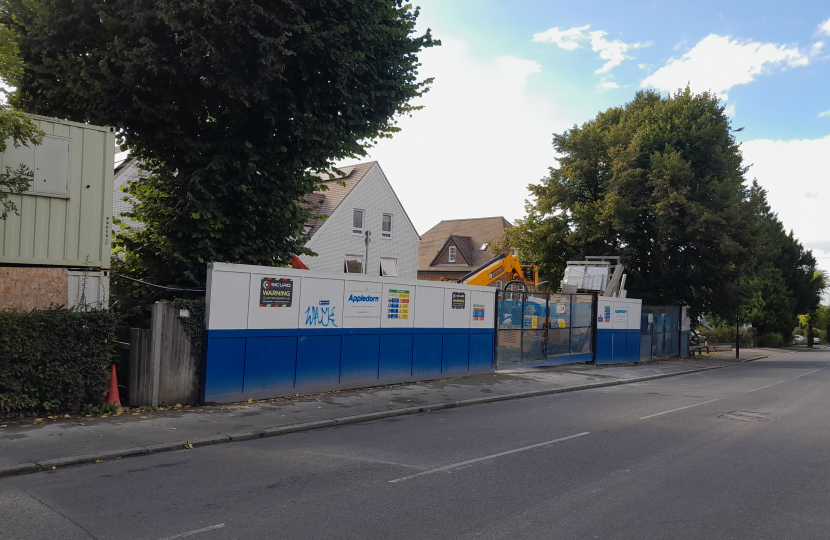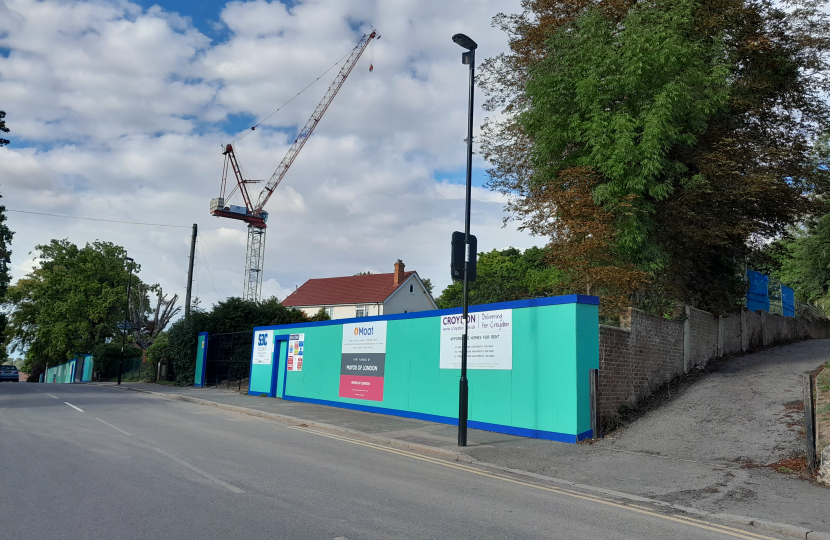Residents often get in touch with us to discuss planning applications in the ward and we want to help you by publishing some guidance on how best to comment, either in support of or against an application. This blog draws heavily on the guide produced by our colleagues in Kenley ward: Cllrs Ola Kolade & Gayle Gander, to whom we're grateful.
Planning is an essential part of neighbourhood regeneration and ensuring a supply of housing for local people, and good quality applications in appropriate locations are welcomed. However, we’ve seen an intensification of applications and developments all over the South of the borough over the past few years, and many residents believe that many of these developments are utterly inappropriate.
Concerns around planning were an important aspect of Croydon Conservatives’ local election campaign and of Jason Perry’s campaign to be Croydon’s first democratically elected Mayor. Jason pledged to restore a character- and design-led approach to planning in Croydon rather than the density-led model which flourished under the previous Labour administration.
Within the first 100 days of taking office, Jason delivered on this pledge and steered the removal of the unpopular SPD2 planning design guide through a Council vote. This document therefore no longer applies to decisions on any new or as yet undetermined planning applications.
Going forward, Jason will be revisiting the Local Plan to make sure we provide much needed new homes in a way that works for all residents, respecting the character of and enhancing our local Croydon communities.
As your local Councillors, we look at new applications in our ward to judge whether they enhance or detract from the local area. We work with residents to refer what we believe to be inappropriate applications to Croydon's Planning Committee but we also rely on concerned residents and Residents' Association to scrutinise the applications and supporting documents.
Residents have an important part to play in this process, but they aren’t always sure about the best way to respond to an application, so to help you in this process here is some guidance on how to respond to a planning application.
How to find applications
All planning applications and supporting documents are published in Croydon’s Public Access Register. You can search for an application via an address or a map view or reference number, and you'll then see all applications relating to that property. You can also set up a profile for you to receive automated updates on applications, save regular searches or be notified about applications received in roads of interest to you.
How to comment on applications
Croydon’s Planning Department provides a step-by-step guide on how to support or object to an application and the sort of things that are considered valid objections. When making judgements on a planning application, Croydon’s Planning Officers are guided by three sets of planning policies:
- Central Government policy known as the National Planning Policy Framework (NPPF)
- The London Plan
- The Croydon Local Plan.
By law, planning officers cannot reject an application unless it goes against planning policies, although many of these decisions are subjective. This means that if you are objecting to a planning application, your response must outline how it conflicts with the guidance above or with material planning conditions. A solid explanation should be given as to why you are objecting, for example because you consider a material planning condition such as ‘loss or harm to trees’ is detrimental to the area, particularly if the application includes landscaping and new trees.
Material planning conditions / considerations include, but are not limited to:
- Loss of light or overshadowing
- Overlooking or loss of privacy
- Character and visual appearance (for example, design, appearance or materials) – design not in keeping with the area
- Layout and density of buildings
- Traffic generation, highway safety or parking
- Noise, smells and disturbance resulting from use
- new windows or spaces that overlook your house or garden
- Loss or harm to trees
- Effect on listed buildings or conservation areas
- Waste management – storage of waste and recycling bins, access to the bins on collection day
- Surface water management / drainage
- Cumulative impact of any of the issues above
There are many other aspects of planning and development that can cause distress to residents, such as impact on house prices, disturbance during construction and impact on mental health, disputes with neighbours etc, but these are not material planning considerations and will not be considered by officers. Covenants originate in civil law and are also not covered by the planning regime; if you need to enforce a covenant you will need to do this through civil law and probably via solicitors, though it's worth noting that sometimes the threat of action under a covenant may cause a developer to back off. Building Control is a separate regime which is not part of the planning process, while Planning Enforcement is a department concerned with ensuring that builders actually build what has been approved, but a discussion of that topic is outside the scope of this blog.
Officers may make use of ‘conditions’ where “otherwise unacceptable development could be made acceptable through the use of conditions”. For more information about conditions, see the Planning Advisory Service website.
Routes for referral
The process for determining planning applications is described in the Council’s constitution within section 4K and 4K (i).
In summary, Senior Planning Officers decide nearly all applications, but some applications go to the Planning Committee who then debate the merits of an application and vote on whether it should be approved or rejected. In this case, officers provide a detailed report and a set of recommendations to the Planning Committee on each referred application. The routes for an application to be referred to committee include:
- Through the Chair/Vice Chair of the Planning Committee
- Via a local councillor, Greater London Assembly Member or Member of Parliament
- Those that have received 12 objections
- Via by a registered Residents’ Association
- Those that have a petition of at least 40 signatures of Croydon residents.
If officers decide to refuse an application, they can do this under delegated powers, rather than taking the application to committee. However if there are referrals as in the bullets above in FAVOUR of the application, then an officer recommendation for refusal would also go to committee as described above. This is much less common - perhaps three or four times in a year.
Preparing your response
If you are planning to support or object to an application, you should follow the detailed guidance on Croydon’s website:
- Comment or object to a planning application: step by step
- Development Management Advice Note 4 – How can I comment on a Planning Application.
Policy DM10: Design and character (page 83 of the Croydon Local Plan) should be of particular interest to Purley residents.
Make sure you respond by the deadline given in Croydon's Public Access Register; you can either fill in the online form on the website (though it has a 2000 character limit which may cramp your style), or you can send an email to [email protected] .
Please also copy your response to your local Councillors via [email protected] , or by sending a letter to us in plenty of time at Croydon Conservatives, 36 Brighton Road, Purley, CR8 2LG.
Further support
Additionally in Purley , we have several excellent Residents’ Associations who have planning expertise (but not much time!); they *may* be able to help and advise you on formulating your response (but only if you are a member). They include:
- Purley & Woodcote RA
pwra.co.uk - Riddlesdown RA
riddlesdown.org - HADRA
hadra.org - Foxley Residents Association
[email protected]
In summary, although responding to a planning application can at times seem daunting, there is support and advice available:
- Your local councillors: [email protected]
- Croydon Council website – make sure you give valid planning reasons for objecting
- Local Residents’ Associations.
Good luck! Let’s work together to protect Purley & the local area.
Cllrs Simon Brew, Samir Dwesar, Holly Ramsey
Purley & Woodcote ward







